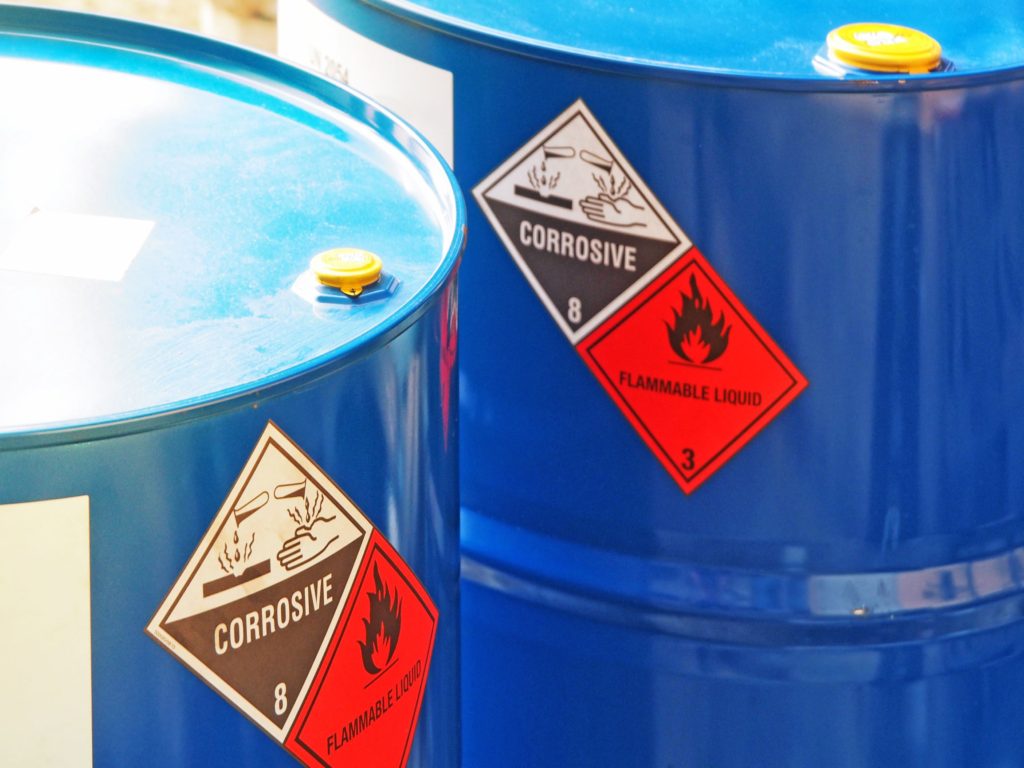
What is hazardous waste? Is it always neon green like in the movies? What about chemicals and products in my home like paint and pesticides, are these hazardous wastes?
What is hazardous waste? USEPA’s simple definition for hazardous waste is “a waste with properties that make it dangerous or capable of having a harmful effect on human health or the environment.” EPA goes further and legally divides hazardous waste into two primary groups, listed hazardous wastes and characteristically-hazardous wastes.
If you are a person looking to understand what items in your home are hazardous to the environment, skip to where we discuss household hazardous waste.
Deeper Dive Into What Is Hazardous Waste
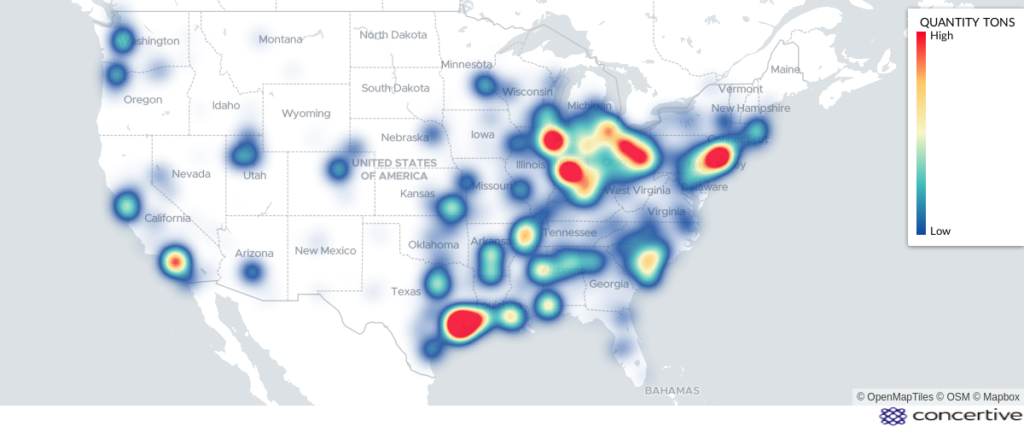
In this article we will go in-depth explaining listed and characteristically hazardous wastes and the history of regulating hazardous waste in the United States.
- Deeper Dive Into What Is Hazardous Waste
- Who Decides What Is A Hazardous Waste?
- So EPA Decides What Is Hazardous Waste?
- Do States Greatly Differ From EPA In Defining What Is Hazardous Waste?
- What Is A Waste?
- “Solid Waste”…Really? That’s The Best Name You Could Come Up With
- What is a Solid Waste?
- What If My Waste Does Not Meet The Solid Waste Definition?
- Is Unused Leftover Paint A Hazardous Waste?
- Hazardous Waste Determination Chart
- Wastes That EPA Does Not Consider Hazardous Waste
- Household Hazardous Wastes
- What Is Hazardous Waste? Listed and Characteristic Wastes
- Listed Hazardous Wastes
- Hazard Codes for Listed Hazardous Wastes
- Wastes Listed Solely For Ignitability, Corrosivity and Reactivity.
- What Happens If I Mix A Listed Waste With Another Material?
- Non-specific Sources (F codes)
- Specific Sources (K codes)
- Commercial Chemical Products (U and P Codes)
- Industries Generating U and P Hazardous Waste (Including Waste Management Companies)
- Waste Management Companies Ship The Most U and P Coded Hazardous Waste But Do Not Generate It
- Industries That Produce The Most U and P Hazardous Waste
- Characteristic Hazardous Waste
- Ignitability (D001)
- Corrosivity (D002)
- Reactivity (D003)
- Toxicity (D004 – D043)
- Toxicity Characteristic Leaching Procedure (TCLP)
- Maximum Concentration of Contaminants for the Toxicity Characteristic
- Toxic Subgroupings
- Other Questions
Who Decides What Is A Hazardous Waste?
In 1976 Congress passed the Resource Conservation and Recovery Act (RCRA.) This act authorized EPA to create regulations for waste disposal to protect health and the environment. The vast majority of waste regulations and all hazardous waste regulations are found in RCRA.
So EPA Decides What Is Hazardous Waste?
Kind of. EPA grants authority to most states to run their own hazardous waste program. The caveat is a state’s hazardous waste regulations cannot be less stringent than EPA. States are allowed to regulate additional wastes EPA does not consider a hazardous waste.
Do States Greatly Differ From EPA In Defining What Is Hazardous Waste?
Some states, like California, have many significant differences from EPA in defining what is hazardous waste. However, most states are very much in line with EPA in defining hazardous waste.
What Is A Waste?
Before we jump into explaining the two main groupings of hazardous waste, the first question we have to ask is, “what is a waste?” EPA states that for something to be a hazardous waste it must first be a waste.
“Solid Waste”…Really? That’s The Best Name You Could Come Up With
The term used in RCRA to define a waste is “solid waste.” We are not referring here to the physical state of the material. A solid waste can be liquid, gas, plasma or physically solid, it just needs to meet the criteria in the next section.
What is a Solid Waste?
EPA broadly defines solid wastes as any material being discarded by being:
- Abandoned
- Inherently Waste Like
- A Discarded Military Munitions
- Recycled In Certain Ways
What If My Waste Does Not Meet The Solid Waste Definition?
If your material does not meet the definition of solid waste, then it is not a waste and furthermore can not be a hazardous waste. All hazardous wastes must first be a solid waste.
Is Unused Leftover Paint A Hazardous Waste?
The first step to determine this would be to figure out if the paint is a solid waste. One of the key words in defining a solid waste is discarded.
If you are planning to possibly use that paint again in the future and it is not expired and able to be used, then no it is not a hazardous waste. Why? Because it has not been discarded and therefore is not a solid waste. Consequently, it cannot be a hazardous waste.
Hazardous Waste Determination Chart
Below we walk through the steps of determining if a waste is a solid waste and a hazardous waste.

Wastes That EPA Does Not Consider Hazardous Waste
Some wastes are excluded from being a hazardous waste. They are specifically removed from being a hazardous waste even though they meet the definition of solid waste and possibly hazardous waste. Because they excluded from hazardous waste…they are not considered a hazardous waste.
We will not go into all the exclusions but some examples are:
- Used Oil Filters
- Agricultural Waste
- Arsenical-Treated Wood
- Injected Groundwater
- Household Hazardous Waste
Read EPA’s “Wastes Excluded From Hazardous Waste Regulation“
Household Hazardous Waste Is Excluded From Hazardous Waste Regulation?
Under RCRA, EPA excludes wastes coming from households from being a regulated hazardous waste. This means waste from your home is exempt from hazardous waste regulation and is not technically a regulated hazardous waste. However, you can still choose to manage environmentally hazardous wastes coming from your residence responsibly.
In California, the state does regulate hazardous waste from households.
Household Hazardous Wastes
In this article we have shown that for most US citizens none of their household waste is a regulated hazardous waste. However, there are many environmentally harmful materials in most homes.
What Is Hazardous Waste From A Household?
What are environmentally hazardous wastes common in the home? The following is a non-comprehensive list of common hazardous household items.
- Aerosol cans
- Antifreeze
- Batteries
- Compact-Fluorescent (CFL) Light Bulbs
- Electronics (Computers and Electronic Devices)
- Fertilizers
- Gasoline
- Light Bulbs
- Mercury / Mercury Devices
- Paint (especially flammable or oil-based)
- Pesticides
- Pool Chemicals
- Televisions
- Tires
- Used Oil
What Do I Do With My Hazardous Waste From My Household?
We recommend calling your local and county government or research their web page. Many municipalities and counties have household hazardous waste collection events that are free to the community. Sometimes these are even fixed locations where you can bring wastes throughout the year.
What Is Hazardous Waste? Listed and Characteristic Wastes
We now know that for a waste to be a hazardous waste it must first be a solid waste. It also would need to not be excluded from the definition of solid or hazardous waste like household hazardous waste is.
In addition to stating a hazardous waste is something dangerous or harmful, EPA breaks apart hazardous waste into 2 broad groups: listed hazardous waste and characteristically hazardous waste.
“Listed wastes are like the named criminals in America’s Most Wanted. They are known to be dangerous and are specifically named and called out. These wastes are hazardous by default.”

One analogy for these 2 groupings is comparing listed wastes to “America’s Most Wanted” and the characteristic group as a rule of law that if someone breaks that rule becomes part of a law-breaker group.
Listed Hazardous Wastes
Listed hazardous wastes are like the named criminals in America’s Most Wanted. They are known to be dangerous and are specifically named and called out. These wastes are hazardous by default.
Listed hazardous wastes can be broken apart into 3 sub-groupings:
- Non-Specific Sources (F code)
- Specific Sources (K code)
- Unused Commercial Chemicals (U and P code)
- Acutely Hazardous (P code)
- Non-Acutely Hazardous (U code)
U and P code hazardous waste identifies specific commercial chemicals that are know to be hazardous. If a certain process creates a dangerous waste, it is called out and listed as an F code waste. Finally, EPA names specific industries and processes that create dangerous waste, these are K code hazardous waste.
Hazard Codes for Listed Hazardous Wastes
EPA assigns a hazard code to each of the listed hazardous wastes in the F, K, U and P lists. These codes indicate the basis for why the waste is regulated as a hazardous waste.
Toxic Waste (T)
Acute Hazardous Waste (H)
Ignitable Waste (I)
Corrosive Waste (C)
Reactive Waste (R)
Toxicity Characteristic Waste (E)
Wastes Listed Solely For Ignitability, Corrosivity and Reactivity.
Listed wastes whose hazard code is solely an “I”, “C” or “R” are no longer regulated as a hazardous waste, if the waste no longer has that characteristic.
What Happens If I Mix A Listed Waste With Another Material?
“(A) mixture made up of any amount of a nonhazardous solid waste and any amount of a listed hazardous waste is considered a listed hazardous waste.”
RCRA Training Module: Introduction to Hazardous Waste Identification
Except as listed previously (wastes solely listed for ignitability, corrosivity or reactivity), materials mixed with listed wastes become…listed hazardous wastes. For example, if you spill a listed waste into soil, the contaminated soil becomes a listed hazardous waste. EPA calls this the “Mixture Rule.”
EPA’s module on Hazardous Waste Identification states, “The mixture rule for listed wastes states that a mixture made up of any amount of a nonhazardous solid waste and any amount of a listed hazardous waste is considered a listed hazardous waste.”
Non-specific Sources (F codes)
F code wastes are a little tricky to understand. F code wastes are related to the process that generates the waste, not the industry of the generator.
If your business is not part of a NAICS / SIC grouping belonging to a K waste, your waste is not applicable to that K waste code because you are not part of that specific industry/source. F code waste, even though it lists very specific processes, is not limited to specific industries like K waste codes. This is why F code wastes are called “Non-specific Sources.”
- Spent solvent wastes (F001 – F005)
- Wastes from electroplating and other metal finishing operations (F006 – F012, and F019)
- Dioxin bearing wastes (F020 – F023 and F026 – F028)
- Wastes from production of certain chlorinated aliphatic hydrocarbons (F024 and F025)
- Wastes from wood preserving (F032, F034, and F035)
- Petroleum refinery wastewater treatment sludges (F037 and F038)
- Multisource leachate (F039)
F code hazardous waste can be further divided into seven groups:
The groupings of hazardous waste are taken from EPA’s document “Hazardous Waste Listings: A User-Friendly Reference Document.”
What Industries Produce F Code Hazardous Waste?

F code hazardous waste is produced in a broad mix of industries from manufacturing to defense.
Regulation of Spent Solvents
The Solvent Must Be Used as A Solvent
For a solvent wastestream to be considered an F001-F005 hazardous waste, the solvent must have been used (spent) as a solvent. It must also have been used for its “solvent purposes.” For example, if we have acetone as an ingredient in unused paint, the acetone would not be considered a spent solvent. However, if we used acetone as a cleaner, to flush a line contaminated with paint, the acetone would be considered a spent solvent.
EPA states in a guidance document, “the December 31, 1985, Federal Register specifies that ‘the spent solvent listings, cover only those solvents that are used for their solvent properties, that is, to solubilize
(dissolve) or mobilize other constituents. For example, solvents
used in degreasing, cleaning, fabric scouring, as diluents,
extractants, reaction and synthesis media, and similar areas are
covered under the listings (when spent). A solvent is considered
‘spent’ when it has been used and is no longer fit for use without
being regenerated, reclaimed, or otherwise reprocessed (50 FR
53316).'”
F003 Spent Solvents
We have a chart of F001 through F005 with an abbreviated “Hazardous Waste” description. In the chart, there is a column entitle “Hazard code.” This code explains why the hazardous waste is regulated. “T” means the waste is listed for toxicity. “I” means ignitability.
If an F003 spent solvent no longer meets the definition of ignitability, it does not have to carry and F003 code.
| Industry and EPA hazardous waste No. | Hazardous waste | Hazard code |
|---|---|---|
| Generic: | ||
| F001 | The following spent halogenated solvents used in degreasing: Tetrachloroethylene… | (T) |
| F002 | The following spent halogenated solvents: Tetrachloroethylene, methylene chloride… | (T) |
| F003 | The following spent non-halogenated solvents: Xylene, acetone, ethyl acetate, ethyl benzene… | (I)* |
| F004 | The following spent non-halogenated solvents: Cresols and cresylic acid, and nitrobenzene… | (T) |
| F005 | The following spent non-halogenated solvents: Toluene, methyl ethyl ketone, carbon disulfide… | (I,T) |
The federal regulations for F code hazardous waste can be found at 40 CFR 261.31
Specific Sources (K codes)
Hazardous wastes carrying K hazardous waste codes are from specific processes from specific industries. These wastes are coming from heavy industrial and manufacturing plants.
K waste codes are divided into 13 subgroups of wastes from specific sources. The 13 subgroups of K-listed wastes are:
- Wood preservation (K001)
- Inorganic pigment manufacturing (K002 – K008)
- Organic chemicals manufacturing (K009 – K011, K013 – K030, K083, K085, K093 – K096, K103 – K105, K107 – K118, K136, K149 – K151, K156 – K159, K161,
- Inorganic chemicals manufacturing
- Pesticides manufacturing (K031 – K043, K097 – K099, K123 – K126, and K131 – K132)
- Explosives manufacturing (K044 – K047)
- Petroleum refining (K048 – K052, and K169 – K172)
- Iron and steel production (K061 and K062)
- Primary aluminum production (K088)
- Secondary lead processing (K069 and K100)
- Veterinary pharmaceuticals manufacturing (K084 and K101 – K102)
- Ink formulation (K086)
- Coking (K060, K141 – K145, and K147 – K148)
For a K waste code to be applicable the waste must meet these two criteria:
- The facility must be within that manufacturing or industrial category listed for that code
- The waste must match the specific process description for that code.
Commercial Chemical Products (U and P Codes)
U and P codes apply to unused chemicals. These wastes are commonly generated by laboratories, chemical manufacturers and distributors. These codes apply to pure chemicals or mixtures where the chemical is the sole active ingredient. This includes containers with residue and spill cleanups.
The regulated chemicals are specifically listed by name and chemical abstract number (CAS) with the corresponding EPA hazardous waste code.
| Hazardous waste No. | Chemical abstracts No. | Substance |
|---|---|---|
| U394 | 30558-43-1 | A2213. |
| U001 | 75-07-0 | Acetaldehyde (I) |
| U034 | 75-87-6 | Acetaldehyde, trichloro- |
What Is The Difference Between U and P Hazardous Waste?
is “acutely” hazardous (e.g., if it is fatal to humans or animals at low doses, §261.11(a)(2))
Hazardous Waste Listings: A User-Friendly Reference Document
The simple answer is that wastes listed as a “P” code are deemed “acutely” hazardous.
What Industries Produce U and P Hazardous Waste?
Industries Generating U and P Hazardous Waste (Including Waste Management Companies)
Below is a chart showing which industries (NAICS Sub-Sectors) shipped the most commercial chemical products for hazardous waste disposal by tonnage. We are using data from EPA’s e-Manifest system from July 2018 through August 2020.

Waste Management Companies Ship The Most U and P Coded Hazardous Waste But Do Not Generate It
Companies involved in waste management by far ship more P and U code hazardous waste than all other industries combined. Why is this? Waste management companies do not originally generate commercial chemical products for disposal, right?
P and U code wastes often are shipped into intermediary waste companies that provide packaging and transportation services but are not the final disposal facility. These wastes may ship to one or more hazardous waste destinations for storage, depacking or bulking before shipping again for final disposal.
Industries That Produce The Most U and P Hazardous Waste
If we remove waste companies from our analysis, we get a clearer picture of what industries generate the most U and P coded hazardous waste. The below chart looks at the percent of total tonnage shipped.
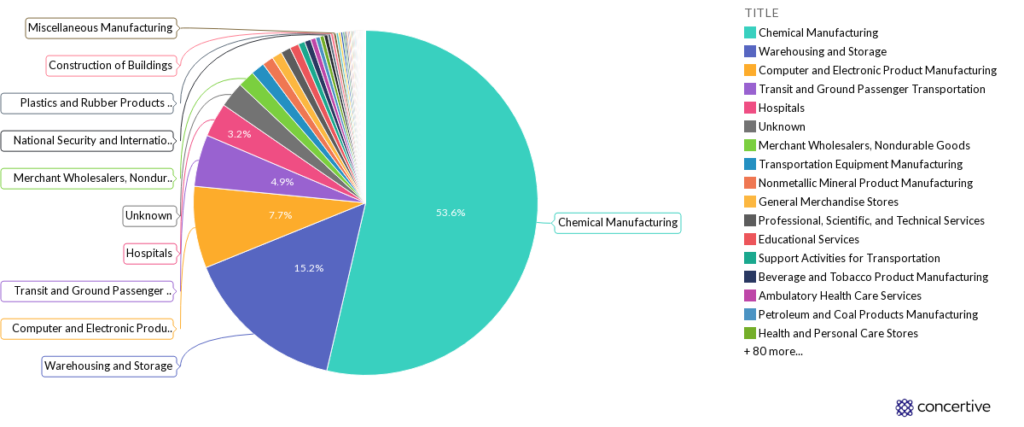
You can read EPA’s regulations regarding disposal of commercial chemical products and see the complete listing of regulated chemicals at 40 CFR 261.33. The regulated chemicals are listed twice. First chemicals are listed alphabetically and then listed again in order of the EPA waste code.
Characteristic Hazardous Waste
Characteristically-hazardous wastes are wastes that are not specifically listed by EPA. However, they exhibit one of forty-three characteristics that makes it a threat to the environment and subsequently a regulated hazardous waste.
Characteristically hazardous wastes can be broken apart into 4 main sub-groupings:
- Ignitable (D001)
- Corrosive (D002)
- Reactive (D003)
- Toxic (D004 – D043)
Ignitability (D001)
Definition of Ignitability
EPA classifies a waste as hazardous for ignitability if it exhibits any of the following properties:
- An aqueous liquid with a flash point less than or equal to 140F (60C)
- Flammable solid (see 40 CFR 261.21(a)(2))
- Ignitable compressed gas
- An oxidizer
Flash Point
What is flash point? Flash point is the lowest temperature at which the fumes above a waste ignite when exposed to flame.
Test methods for flash point (ignitability) include the Pensky-Martens Closed-Cup Method (SW-846 Test Method 1010A) and the Setaflash Closed-Cup Method (SW-846 Test Method 1020B).
Flammable Solid
EPA defines a flammable solid in 40 CFR 261.21(a)(2) as “It is not a liquid and is capable, under standard temperature and pressure, of causing fire through friction, absorption of moisture or spontaneous chemical changes and, when ignited, burns so vigorously and persistently that it creates a hazard.”
Ignitable compressed gas
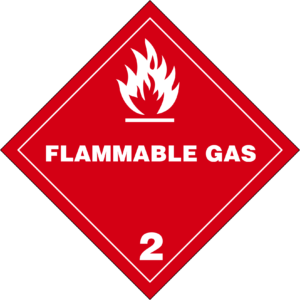
Aerosols and compressed gas cylinders fall into this category. The compressed gas must be flammable to meet the definition of a D001 hazardous waste.
See 40 CFR 261.21(a)(3) for more information.
Oxidizers
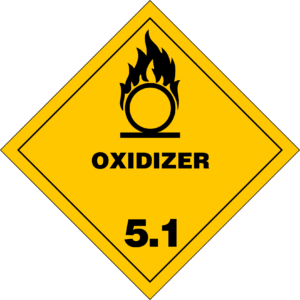
Oxidizers are chemicals that give off oxygen. They make the ignition of waste even more dangerous because oxygen is like fuel to a fire.
EPA defines an oxidizer as a substance “that yields oxygen readily to stimulate the combustion of organic matter.”
Common examples of oxidizers are hydrogen peroxide and swimming pool chemicals.
Regulation Defining What Is The Hazardous Waste Characteristic of Ignitability
Read EPA’s regulations concerning ignitability at 40 CFR 261.21
Modernized Definition of Ignitability
EPA updated the definition of ignitability on July 7, 2020. Some of the updates include:
- Updated flash point test methods (from 1010A and 1020B to 1010B and 1020C)
- Defining “aqueous” to mean at least 50% water. Tthis is in reference to the alcohol-content exclusion applicable to aqueous alcohol wastes with less than 24% alcohol and now at least 50% water
- Allowing the use of non-mercury thermometers in testing
For a through update on these changes, check out McCoy’s post, “Definition of D001 Hazardous Waste Modernized.”
Corrosivity (D002)
A waste is hazardous if its pH is less than or equal to 2 or greater than or equal to 12.5.
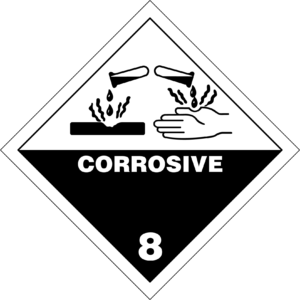
Definition of Corrosivity
pH Scale
The primary method used in determining if a material is a hazardous waste due to corrosivity, is by testing its pH.
A waste is hazardous if its pH is less than or equal to 2 or greater than or equal to 12.5. The pH scale below illustrates this.

Steel Corrosivity
If a liquid corrodes steel at a rate of greater than 0.25 inches per year, is hazardous for corrosivity.
You can read the federal regulations at 40 CFR 261.22
Reactivity (D003)
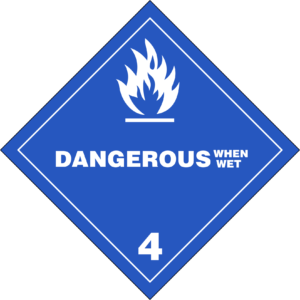
Reactivity is defined as any material that meets any of the below conditions:
- Unstable and undergoes violent change without detonating
- Water reactive
- Forms explosives with water
- Creates dangerous gases when mixed with water
- Is a cyanide or sulfide bearing waste which can generate dangerous gases when exposed to conditions between 2 and 12.5
- Is explosive under confined heating or a strong initial source
- Explosive under standard temperature and pressure
- Forbidden explosive as assigned by Department of Transportation
Toxicity (D004 – D043)
To be hazardous for toxicity a waste need to exceed one of 40 limits EPA has set. These are maximum limits set for 40 different chemicals based on a specific testing procedure. If the waste meets or exceeds the regulated level it is a hazardous waste and that EPA hazardous waste code is applied.
The test performed to determine if a waste is hazardous for toxicity is called the “toxicity characteristic leaching procedure” (TCLP.)
Toxicity Characteristic Leaching Procedure (TCLP)
The TCLP tries to determine if a waste would “leach” hazardous chemicals out in the conditions of a landfill. To accomplish this, the waste is added to an acidic solution and tumbled for 18 hours. The liquid is then tested to determine how much of the hazardous constituent leached into the solution. If the contaminant meets or exceeds the regulated level the waste is hazardous and that contaminant must be treated.
Maximum Concentration of Contaminants for the Toxicity Characteristic
| EPA Hazardous Waste code | Contaminant | Regulated Level (mg/l) |
| D004 | Arsenic (As) | 5.0 |
| D005 | Barium (Ba) | 100.0 |
| D018 | Benzene | 0.5 |
| D006 | Cadmium (Cd) | 1.0 |
| D019 | Carbon Tetrachloride | 0.5 |
| D020 | Chlordane | 0.03 |
| D021 | Chlorobenzene | 100.0 |
| D022 | Chloroform | 6.0 |
| D007 | Chromium (Cr) | 5.0 |
| D023 | o-Cresol | 200.0 |
| D024 | m-Cresol | 200.0 |
| D025 | p-Cresol | 200.0 |
| D026 | Cresol | 200.0 |
| D016 | 2,4-D | 10.0 |
| D027 | 1,4-Dichlorobenzene | 7.5 |
| D028 | 1,2-Dichloroethane | 0.5 |
| D029 | 1,1-Dichloroethylene | 0.7 |
| D030 | 2,4-Dinitrotoluene | 0.13 |
| D012 | Endrin | 0.02 |
| D031 | Heptachlor | 0.008 |
| D032 | Hexachlorobenzene | 0.13 |
| D033 | Hexachlorobutadiene | 0.5 |
| D034 | Hexachloroethane | 3.0 |
| D008 | Lead (Pb) | 5.0 |
| D013 | Lindane | 0.4 |
| D009 | Mercury (Hg) | 0.2 |
| D014 | Methoxychlor | 10.0 |
| D035 | Methyl ethyl ketone | 200.0 |
| D036 | Nitrobenzene | 2.0 |
| D037 | Pentachlorophenol | 100.0 |
| D038 | Pyridine | 5.0 |
| D010 | Selenium (Se) | 1.0 |
| D011 | Silver (Ag) | 5.0 |
| D039 | Tetrachloroethylene | 0.7 |
| D015 | Toxaphene | 0.5 |
| D040 | Trichloroethylene | 0.5 |
| D041 | 2,4, 5-Trichlorophenol | 400.0 |
| D042 | 2,4,6-Trichlorophenol | 2.0 |
| D017 | 2,4,5-TP (Silvex) | 1.0 |
| D043 | Vinyl Chloride | 0.2 |
Toxic Subgroupings
The toxic chemicals from D004 – D043 can be further broken up into subgroups:
- RCRA Metals: Arsenic, Barium, Cadmium, Chromium, Lead, Mercury, Selenium, Silver
- Volatile Organic Compounds (VOCs): Benzene, Carbon Tetrachloride, Chlorobenzene, Chloroform, 1,2-Dichloroethane, 1,1-Dichlorethylene, Methyl Ethyl Ketone, Tetrachloroethene, Trichlorethene and Vinyl Chloride.
- Semi-Volatiles (SVOCs): Cresol (o,m,p), 1,4-Dichlorobenzene, 2,4-Dinitrotoluene, Hexachlorobenzene, Hexachlorobutadiene, Hexachloroethane, Nitrobenzene, Pentachlorophenol, Pyridine, 2,4,5-Trichlorophenol and 2,4,6-Trichlorophenol
- Pesticides/Herbicides: Chlordane, Endrin, Heptachlor, Lindane, Methoxychlor, Toxaphene, 2,4-D and 2,4,5-TP(Silvex)
Other Questions
Are Hazardous Materials and Hazardous Wastes The Same Thing?
No. “Hazardous materials” are regulated by the Department of Transportation (DOT.) Hazardous materials are a different grouping and have a wholly different goal and concern than hazardous waste.
Hazardous material regulation has a goal of safety during transport. Hazardous waste regulation has a goal of protecting human health and the environment.
Hazardous wastes ARE hazardous materials when shipped. However, there are many hazardous materials that are not hazardous wastes.
Do All Hazardous Wastes Have To Be Shipped On A Hazardous Waste Manifest?
No. Wastes coming from very small quantity generators (VSQGs) also commonly referred to as CESQGs, federally do not have to go on a hazardous waste manifest. However, states and destination facilities may require VSQGs to ship on a manifest.
“VSQGs meeting all of the requirements in 40 CFR section 262.14 are not subject to the manifesting requirements in part 262 under the federal requirements. States, however, can be more stringent than the Federal regulations and may require inspections of containers from all generators.” EPA Frequent Questions About Hazardous Waste Generation
